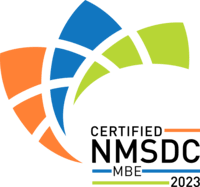What Is The Future of Inclusion?
What Is The Future of Inclusion? This is a question we’ve been wrestling with for several months now and want to better understand what others are thinking.
What Is The Future of Inclusion? This is a question we’ve been wrestling with for several months. From my conversations with industry leaders and peers, this is a question many are also seeking to better understand and get answers because of what is at stake.
As an entrepreneur, award winning author and industry leading practitioner, I’ve helped leaders at big corporations build inclusive experiences and grow their share of what we call the “total addressable or serviceable audience” by including more data points and cultural insights, not excluding data and cultural insights.
Whether it means more market share within a competitive marketplace or the best available talent in the workplace, when you intentionally build inclusive experiences it means you have a higher probability of getting a higher return on your investment versus excluding audience segments.
We’ve heard boardroom whispers and headlines that read, “rename it”, “integrate it”, “pause it” or completely “eliminate it.” I’m not sure what to do when you remove “it” what that means yet. It gets a little confusing because are we asking to “remove people”, “eliminate people” or “pause people?” What we do know and understand, there is confusion and a need to prioritize what the future of inclusion is and is not.
While many institutions, rightfully so, are concentrating on the preservation of the past and present, few were prioritizing thinking and play booking what the Future of Inclusion is and is not.
As coined by Thomas Friedman, we are in the Age of Acceleration and in the midst of a seismic shift in how business models are redefined. Excluding data and audiences could significantly alter outcomes for leaders and organizations for how it wins in the marketplace and workplace. As technology gallops ahead, how should we update our companies, governments and educational institutions if we are excluding data and audience segments? With a shifting social and geopolitical landscape, building an inclusive go-to-market approach and workforce for all is critical because of what’s at stake.
What’s Next?
Over the next several days, weeks and months, we want to hear and learn from others about What Is The Future of Inclusion? What does it mean to them, their business and industry?
Of course, given the work we are doing and have been doing, we have a point of view. However, it does not mean we’ve solved all of the world’s problems. This is uncharted territory and something we all should define.
To help build community, aggregate responses and learnings, we are starting The Future of Inclusion (dot org) – more to come on that.
If you want to join us in solving this problem, share thoughts, resources and educate — Let’s build together, join our community!
Join The Future of Inclusion (dot org)
